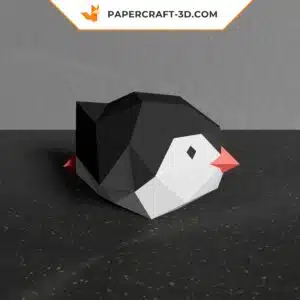| Key points | Details |
|---|---|
| 🌏 Origins | Born in China, popularized in Japan. |
| 📜 Rules | Use paper only, no cutting or glue. |
| 📃 Paper type | Origami paper for beginners, washi for works of art. |
| 👶 S tarting age | From 2 1/2years, ideal at 6 years. |
The delicate art of paper folding, better known asorigami, spans the ages and cultures, fascinating us with its ability to transform a simple sheet of paper into a complex and detailed work of art. This practice, synonymous with patience, precision and creativity, is deeply rooted in history and tradition, while offering tangible benefits for mind and body. This article explores the origins of origami, its fundamental rules, and offers a guide to the ideal age to start, not forgetting to recommend the best origami paper.
Origins of origami
Thehistory of origami is fascinating, with a mosaic of theories and legends. Although it is widely recognized as a Japanese art, its true origins can be traced back to China, as early as the first century AD, when paper was invented. It was not until many centuries later, around the 6ᵉ century, that Buddhist monks would introduce the practice to Japan. It was there that origami would really take off, evolving into an art form in its own right, carried by a specific vocabulary: the term “origami” itself derives from the Japanese words “oru” (to fold) and “kami” (paper).
The development of origami in Japan is inseparable from its cultural and spiritual aspects, reflecting the delicacy, attention to detail and symbolic depth valued in Japanese society. This evolution has made origami much more than just a hobby: it’s a vehicle for ancestral traditions and a reflection of societal values.
Folding rules
Origami may seem childish at first glance, but it’s governed by strict rules that define its practice. The fundamental principles of origami stipulate the exclusive use of paper, without recourse to cutting or glue. This constraint, far from limiting creativity, actually stimulates it, encouraging artists to explore the infinite possibilities offered by a simple sheet of paper.
The Folder’s Solfeggio, a set of instructions describing the types of folds and maneuvers to be performed, is the basic language of all origami enthusiasts. Internationally understandable, this system of notation enables models and techniques to be shared across the globe, transcending language barriers.
Choose the most suitable paper for your origami
Embarking on the art of origami begins with choosing the right materials, and in particular the right paper. While theoretically any paper can be folded, certain types offer far superior experience and results. For beginners, traditional origami paper, often colored on one side and white on the other, is ideal thanks to its finesse and ease of folding, resulting in clean, precise creations. For a more in-depth exploration of the subject, I recommend reading “Which paper to choose for papercraft? A complete guide to the best types”.
Here is a table distinguishing the types of paper frequently used in origami:
| Paper type | Specifications | Usage |
|---|---|---|
| Traditional origami paper | Colored on one side, white on the other, thin but strong | Ideal for beginners |
| Washi paper | Rich in texture, strong | Decorative models, works of art |
| Kraft paper | Thick, highly resistant | Models requiring high strength |
In addition to the type of paper, success in the“art of folding” also relies on lighting, which must be sufficient to clearly distinguish folds and details, and on a few optional tools such as a ruler or a folding machine to facilitate the marking of folds.
At what age can you start origami ?
Origami is accessible to everyone, whatever their age. Indeed, children as young as 2 1/2 can start learning origami with simple models. However, it’s around the age of 6 that children generally develop the concentration and cognitive skills needed to fully appreciate the art of folding and understand its underlying principles. For beginners of any age wishing to take up this delicate art, a step-by-step guide is available at “How to make origami easily: A step-by-step guide for beginners”.
The interest in origami is not limited to the creation of artistic works; it’s also a playful way of developing fine motor skills, patience and other cognitive skills in children, as well as serving as an escape and relaxation mechanism for adults. Origami can also be an effective teaching tool, introducing mathematical concepts in an interactive and tangible way.
Somewhere between tradition and innovation, art and science, origami continues to inspire and renew, captivating the hearts and minds of those who practice it. This paper universe, where precision and imagination intertwine, remains an open door to a myriad of possibilities, accessible from earliest childhood and for a lifetime.















